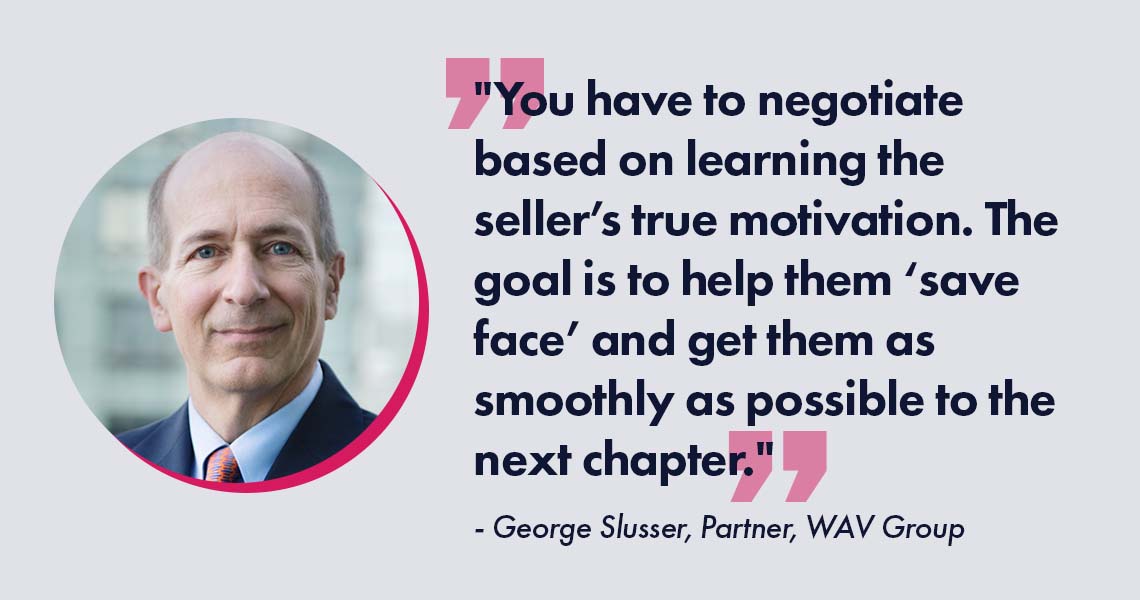Once you’ve determined that everything makes sense for an acquisition, negotiation and terms present the next hurdle.
“You have to negotiate based on learning the seller’s true motivation,” Slusser says. “The goal is to help them ‘save face’ and get them as smoothly as possible to the next chapter. Rarely is the seller going to be completely happy with the purchase price. Because of the risk involved, it has to be based on an earn-out over a few years and tied to the performance of the company.”
When Slusser is involved in a deal, he always tries to get the seller and buyer to agree on what the true adjusted earnings of the company are.
“We provide a completely transparent process to the valuations,” Slusser says. “I always tell them, you are welcome to debate the multiple, but there must be an agreement with what the true earnings of the company are. It’s very hard to get to a deal if one side feels they are earning $250,000 and the other $500,000.”
If no agreement is made, sometimes it’s best to walk away rather than sign on the dotted line for a deal that doesn’t make sense economically.
Before finalizing a deal, Golden notes that a company needs to be very aware of what it is truly buying.
“We look at whether the terms make sense for us, if we’re going to be able to retain the talent we’re acquiring, and most importantly, whether it is a fit culturally,” he says. “If there’s a cultural mismatch, we won’t pursue a deal.”
Most companies that have executed successful deals have found that transparency from the beginning is the most important factor.
 “If both buyer and seller align themselves with the right financial advisors, spend enough time understanding what things will look like post-close and understand the expectations on both sides of the transaction from the beginning, you’ll know whether it’s either time to sign or walk away,” Hanna says. “I’ve always felt that in the best deals that we’ve done, we believe we’ve paid too much, and the seller believes we paid too little….so we’re both in agreement to make the deal work and be even better five years down the road after we realize those mutual benefits of consolidation.”
“If both buyer and seller align themselves with the right financial advisors, spend enough time understanding what things will look like post-close and understand the expectations on both sides of the transaction from the beginning, you’ll know whether it’s either time to sign or walk away,” Hanna says. “I’ve always felt that in the best deals that we’ve done, we believe we’ve paid too much, and the seller believes we paid too little….so we’re both in agreement to make the deal work and be even better five years down the road after we realize those mutual benefits of consolidation.”
Staying patient and not getting too focused on the minute details can help a company weigh a potential merger or acquisition. While it is necessary to examine the details in any potential business deal, it is equally as important to zoom out and evaluate the entire picture, including potential benefits or drawbacks.
“Negotiation is an expected part of the equation and can be a place where keeping an open mind and exercising creativity can be beneficial,” McBride says. “The negotiation process is where active listening is particularly critical. Buyers and sellers are not always direct in expressing what is important to them. By employing active listening and staying in constant communication with the seller, you can identify the important items for making the deal work.”

Tweaking terms to satisfy both parties can take time and does not always lead to a successful merger or acquisition. However, keeping things amicable if it is time to walk away will benefit each company in the future. After all, walking away does not mean no; it just means “not at this time.”
“I would encourage others to maintain communication, as you may be surprised to learn what the true issues are,” McBride says. “The real estate industry can feel like a small world, and you never know when a prior conversation may resurface in the future and lead to a successful deal.”



